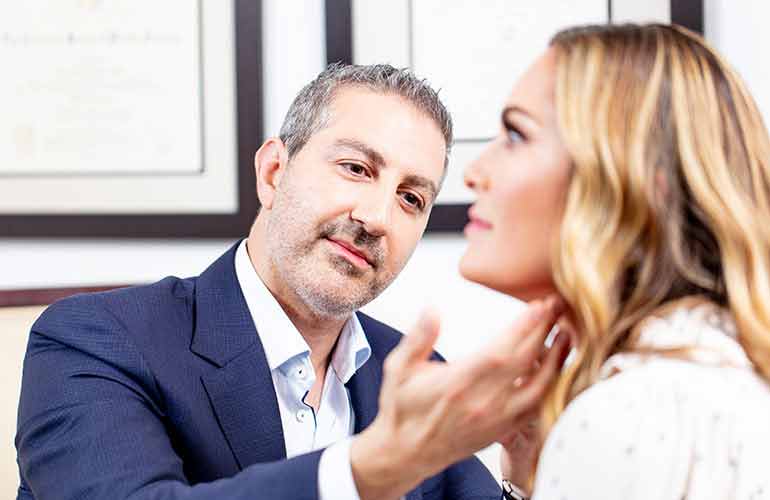Our Facelift Features Deep-Plane and SMAS Techniques

Aging is a difficult process for our body to handle, especially in the facial region. The first signs of aging appear in the face early and progress over time. It can cause us to develop loose, sagging skin, wrinkles, baggy eyes, and jowls. This can greatly affect our appearance, and in the competitive world that we live in today, we just can’t afford to look anything less than perfect.
You can subtly control these signs of aging by getting a facelift. A facelift is a cosmetic procedure that is designed to remove excess fat and tighten the skin around your face, restoring the youthful appearance it once had.
There are two different types of facelifts, and they are the deep plane facelift and the SMAS technique.
The SMAS facelift
SMAS stands for a superficial musculoaponeurotic system. The SMAS describes a group of tissues that begin below the ear and ends in the neck region. The SMAS is responsible for connecting the different components of the face, including muscles, fat, the cheeks, and the superficial muscle called platysma. As we age, the platysma muscle causes bands on our neck. These bands give rise to what we call the “turkey neck”.
In the SMAS technique, the facelift mainly involves lifting up and repositioning the SMAS layer. In addition to correcting the SMAS, a double chin, wrinkles, and turkey neck are also treated by tightening the underlying muscles and the SMAS. Although the surgery can take anywhere between one to two hours, it is a relatively safe procedure with minimal risks.
The SMAS Facelift is Performed Under General Anesthesia
Patients who have undergone the SMAS facelift will make a complete recovery a couple of weeks after the surgery. The face may be covered in bandages for the first few days and the head needs to be inclined with respect to the body. Patients are likely to experience some slight swelling and bruising after the surgery. These are the minor side effects of the procedure and is likely to subside within a few days.
Deep Plane Facelifts
A deep plane facelift draws its basic principles from the SMAS technique. The deep plane refers to the plane between the platysma and the SMAS. It also includes the layer of muscles that are responsible for our facial expressions.
In the deep plane technique, the muscles responsible for our facial expressions are repositioned along with the cheek muscles and the cheek pads. By doing this, the movement of these muscles will be free from tension. This combined with a proper repositioning of the cheek muscles results in a more youthful looking appearance.
Both SMAS and deep plane facelifts should be performed only under the supervision of a skilled plastic surgeon. The surgery involves precise attention to detail. Experienced surgeons are likely to have a finesse to their techniques which is a crucial aspect of getting a facelift.
Make sure to discuss your goals and expectations with your doctor. You need to keep realistic expectations about the results and understand that your final results may not look exactly like another person’s. Your unique traits are taken into account when performing the procedure.
Contact Our Office
Contact our office to learn more about the facelift with skilled plastic surgeon Dr. Richard Balikian. With his help and guidance, you’ll be on your way to a more youthful and beautiful look.


